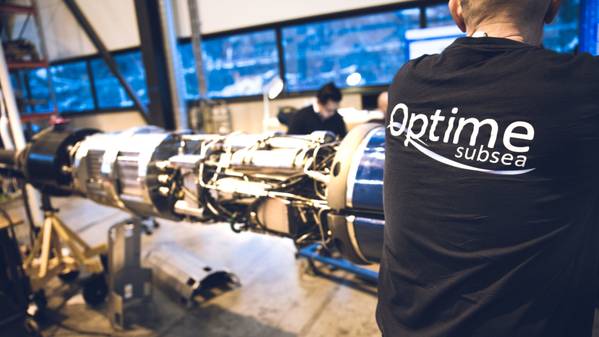
Norway-based Optime Subsea said Friday it had successfully tested and qualified a high-speed wireless communication system for the completion of subsea wells.
"The wireless communication system, part of Optime Subsea’s Remotely Operated Controls Systems (ROCS), was successfully tested at the Wintershall Dea-operated Nova field, which is located about 120 kilometers northwest of Bergen, Norway, in 370 meters water depth," the company said.
“This is a game-changer for the oil and gas industry, which for 20 years has tried to solve this challenge. For the very first time, the complete wireless installation of the tubing hanger on the subsea tree was accomplished without relying on a wired drill pipe,” says Trond Løkka, chief innovation officer at Norway-based Optime Subsea.
Wi-fi below water
"When completing subsea wells, the tubing hanger is placed on top of the wellhead, as a seal towards the rest of the subsea well. Normally the tubing hanger is controlled through a dedicated hydraulic umbilical that runs from the topside to seabed and adds a large 20-30 feet control container topside. However, Optime Subsea’s ROCS has permanently removed the need for both the umbilical and the topside hydraulic unit, with the obvious cost and environmental benefits this provides," Optime Subsea.
"For instantaneous data transfer from downhole to surface – and back – Optime Subsea has until now relied on a wired drill pipe. Optime Subsea has for many years had an ambition of replacing this data transfer method with wireless communication, further reducing capex investments and operating costs for operators," Optime Subsea said.
“Think wi-fi from topside to seabed, to control well completion operations. We have proven that this is both possible and reliable. In our view, this way of installing tubing hangers on subsea tress will become the new industry standard for subsea well completion operations worldwide because of its substantial cost and environmental savings versus competing methods,” adds Trond Løkka.
Optime Subsea’s subsea wireless telemetry system has performed excellently with high-speed data communication and low power consumption.
Aker BP support
While the first operation was performed on Wintershall Dea’s Nova field, another operator – Aker BP – has been instrumental in the development of the wireless communication system, Optime Subsea says.
“This project has been driven by Aker BP, with Wintershall Dea graciously participating in the testing. We are extremely grateful to both operators for their continuous dedication to chasing cost, environmental and health and safety benefits associated with remote subsea operations,” says Trond Løkka.